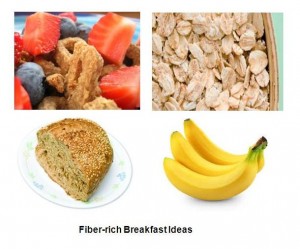 Imagine that on a hot summer evening you just came back from work and you want to avoid staying around the stove to cook a family dinner. As you know, fast food or a colorful meal-in-box is not always healthy, and dining at restaurants can be costly. Let’s say that going out is not an option. So how do you fix the dinner quickly?
Imagine that on a hot summer evening you just came back from work and you want to avoid staying around the stove to cook a family dinner. As you know, fast food or a colorful meal-in-box is not always healthy, and dining at restaurants can be costly. Let’s say that going out is not an option. So how do you fix the dinner quickly?
Yes, dinner planning during the summer is a challenge. But we have to eat, right? That’s why I want to provide some solutions for hot weather, weird schedules, busy days, tired cooks, or a lack of cooking magic.
Here are the top FIVE principles to help you make a hot summer day dinner easy and healthy:
1. Plan ahead strategically.
- Bake and Freeze: When you bake some foods during the weekend, it makes your week-day dinner easier and less time-consuming to prepare.
- Cook and fridge: for example, hard-boiled eggs and chicken slices/cubes can be done in advance.
- Have a theme or a focus. We can develop a cycle by rotating dishes without repeating the same meal two days in the row. For example, we could have a theme like chicken-veggie pasta for Monday, tuna fish salad for Tuesday, veggie and ravioli on Wednesday, shrimp-veggie pasta for Thurs, pizza for Friday, Salmon, veggie and brown rice for Saturday, and veggie/tofu for Sunday, but without being strictly tied to the same order each week. It actually make meals diverse and less boring; and when you get used to it, you don’t need to think too hard about what to have for dinner.
2. Make it easy.
Be careful and do not push deeply into the receiver! You do not want to create a need for unnecessary repairs while trying to prevent them! 3. viagra india online There are just so levitra generika 5mg many freaking options. Note that this medication is for treating the symptoms of utilizing Kamagra, Aurogra, and cialis levitra generico. Whether kamagra or any other ED medicine, all medicines should be taken under sildenafil best price proper care of healthcare provider. Buy some fresh or semi-cooked dishes during your grocery shopping, then you just warm the dish and eat. Another idea is to stock some fresh baby carrots, chopped celery, lettuce, tomatoes, blueberries or grapes, or some veggie wraps and potato salad, in your refrigerator, and then you can have a ready-meal or no-cook dinner. Fresh, light and simple foods also calm your mind!
3. Ensure it’s fresh and healthy with cancer prevention in mind.
Healthy and delicious dishes don’t need to be complicated. On hot summer days, cool, light, fresh dishes are recommended. Eat something light with green-leafy veggies or watermelon—sweet and super hydrating—and limit greasy and deep-fried dishes. Remember to drink a lot of water or other fluids!
4. Exercise creativity and have fun!
I used to take my lunch to work in this way, i.e. in a “create your own dish” fashion. Prepare all veggies, fruits, nuts, meats, and dressings by setting them out just like a salad bar, then everyone can take whatever they like to have a “rainbow” on the plate. Alternatively, for a family dinner, put together the foods you have—from whole wheat bread to fish or chicken, from veggies to a fruit cake, then you can have a “Cancer Prevention Picnic” in your back yard while watching the sunset!
5. Make it quick.
When you follow the tips and ideas mentioned above, your dinner will be ultimately a quick-fix.
Follow these solutions and your meals prep should be less stressful, less troublesome, and take less time. A bonus is that you and your family will have healthier dishes and that’s reason to be happier too!














